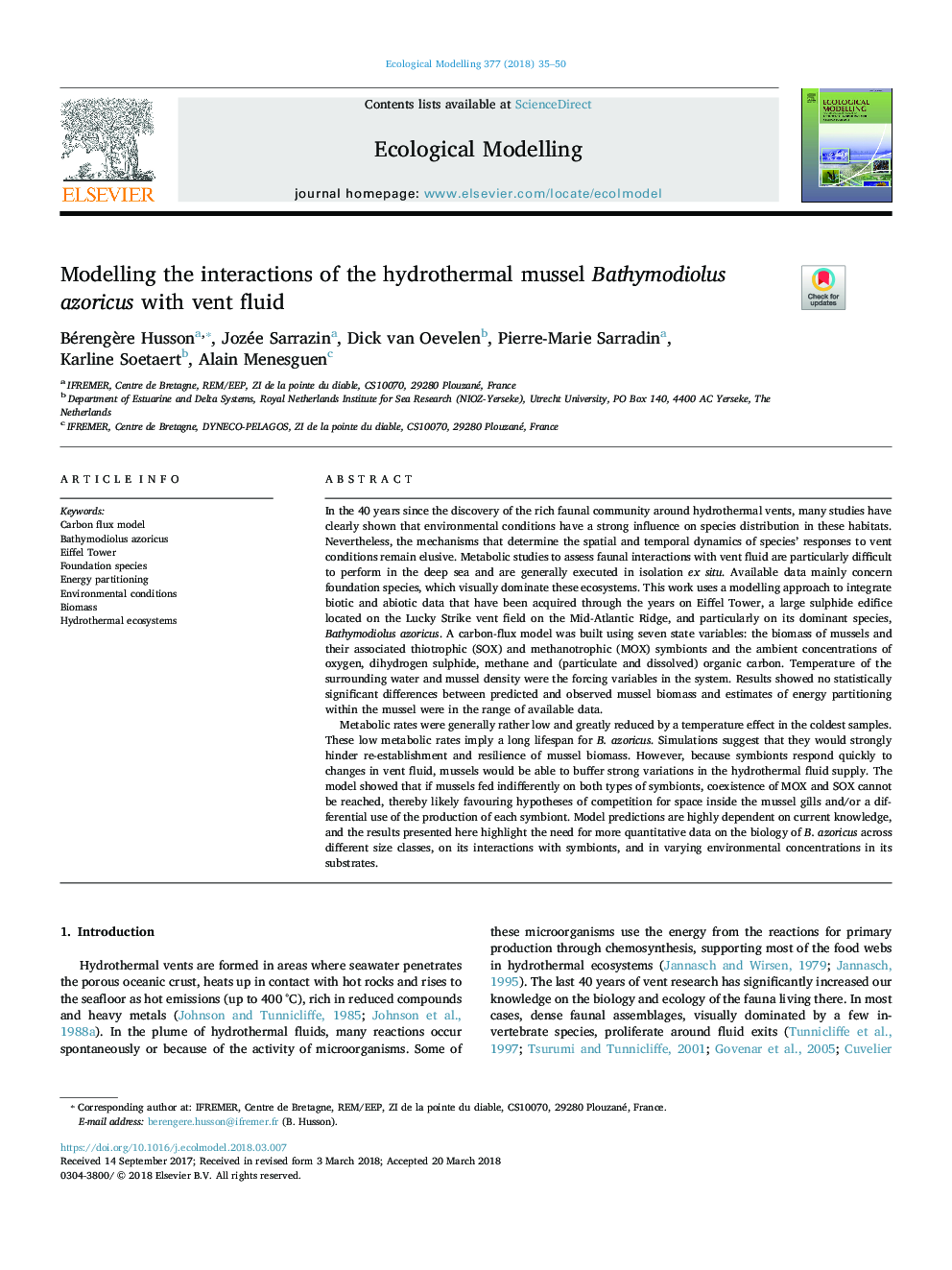| Article ID | Journal | Published Year | Pages | File Type |
|---|---|---|---|---|
| 8846058 | Ecological Modelling | 2018 | 16 Pages |
Abstract
Metabolic rates were generally rather low and greatly reduced by a temperature effect in the coldest samples. These low metabolic rates imply a long lifespan for B. azoricus. Simulations suggest that they would strongly hinder re-establishment and resilience of mussel biomass. However, because symbionts respond quickly to changes in vent fluid, mussels would be able to buffer strong variations in the hydrothermal fluid supply. The model showed that if mussels fed indifferently on both types of symbionts, coexistence of MOX and SOX cannot be reached, thereby likely favouring hypotheses of competition for space inside the mussel gills and/or a differential use of the production of each symbiont. Model predictions are highly dependent on current knowledge, and the results presented here highlight the need for more quantitative data on the biology of B. azoricus across different size classes, on its interactions with symbionts, and in varying environmental concentrations in its substrates.
Keywords
Related Topics
Life Sciences
Agricultural and Biological Sciences
Ecology, Evolution, Behavior and Systematics
Authors
Bérengère Husson, Jozée Sarrazin, Dick van Oevelen, Pierre-Marie Sarradin, Karline Soetaert, Alain Menesguen,
